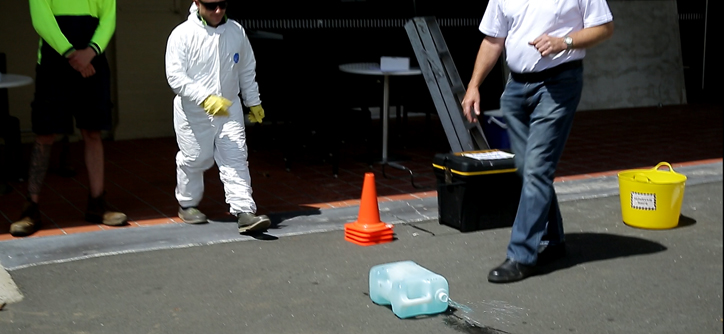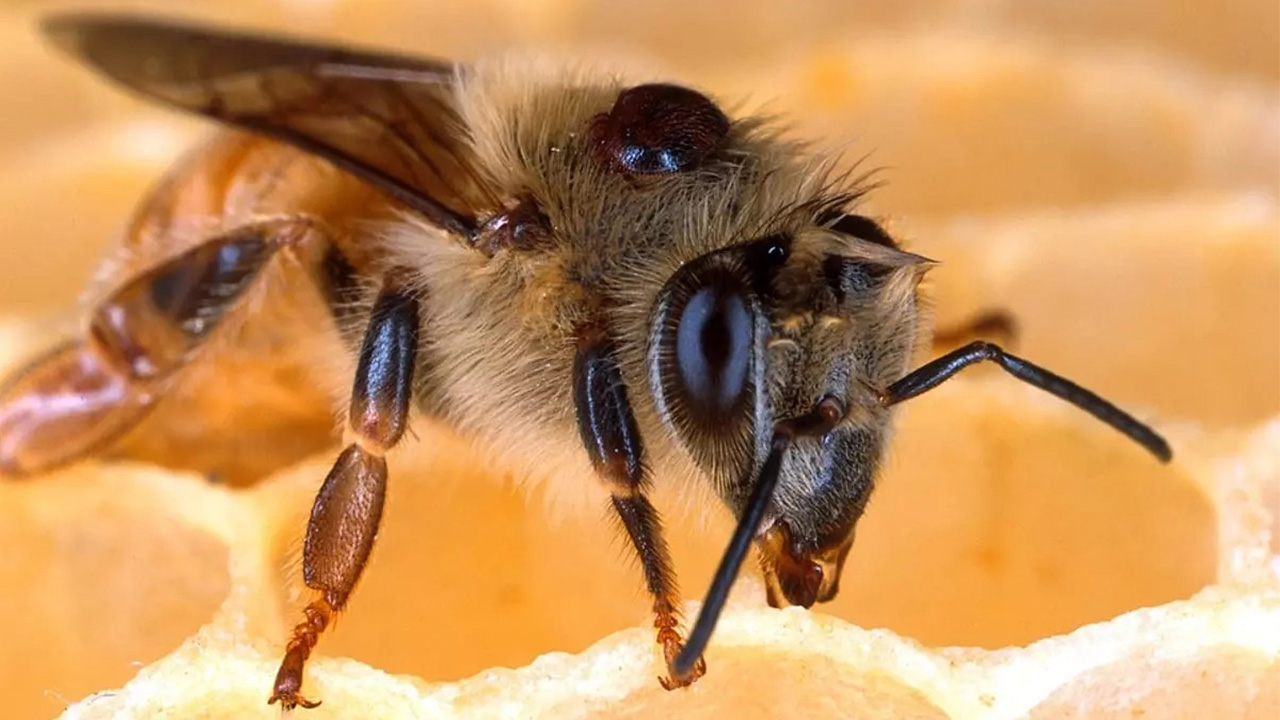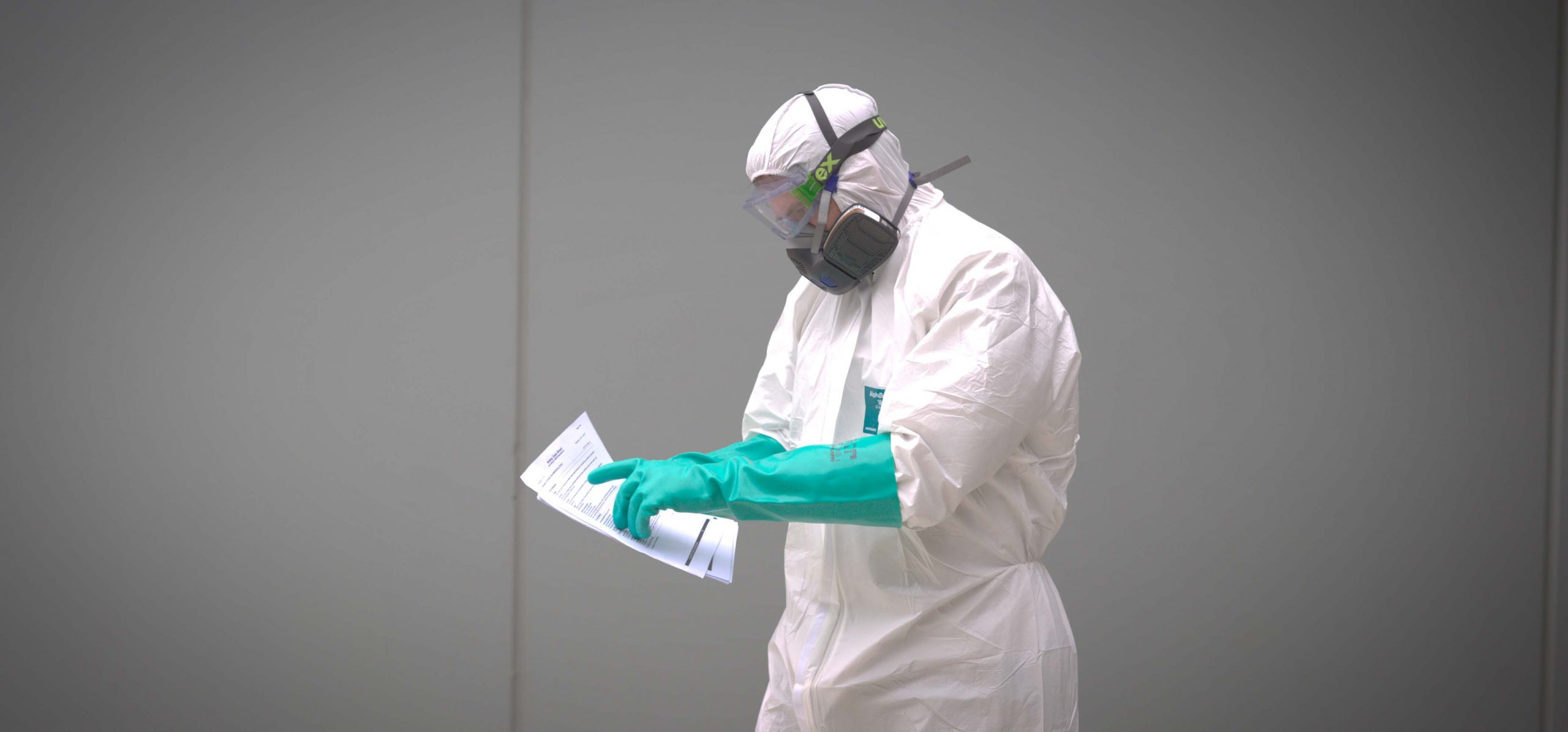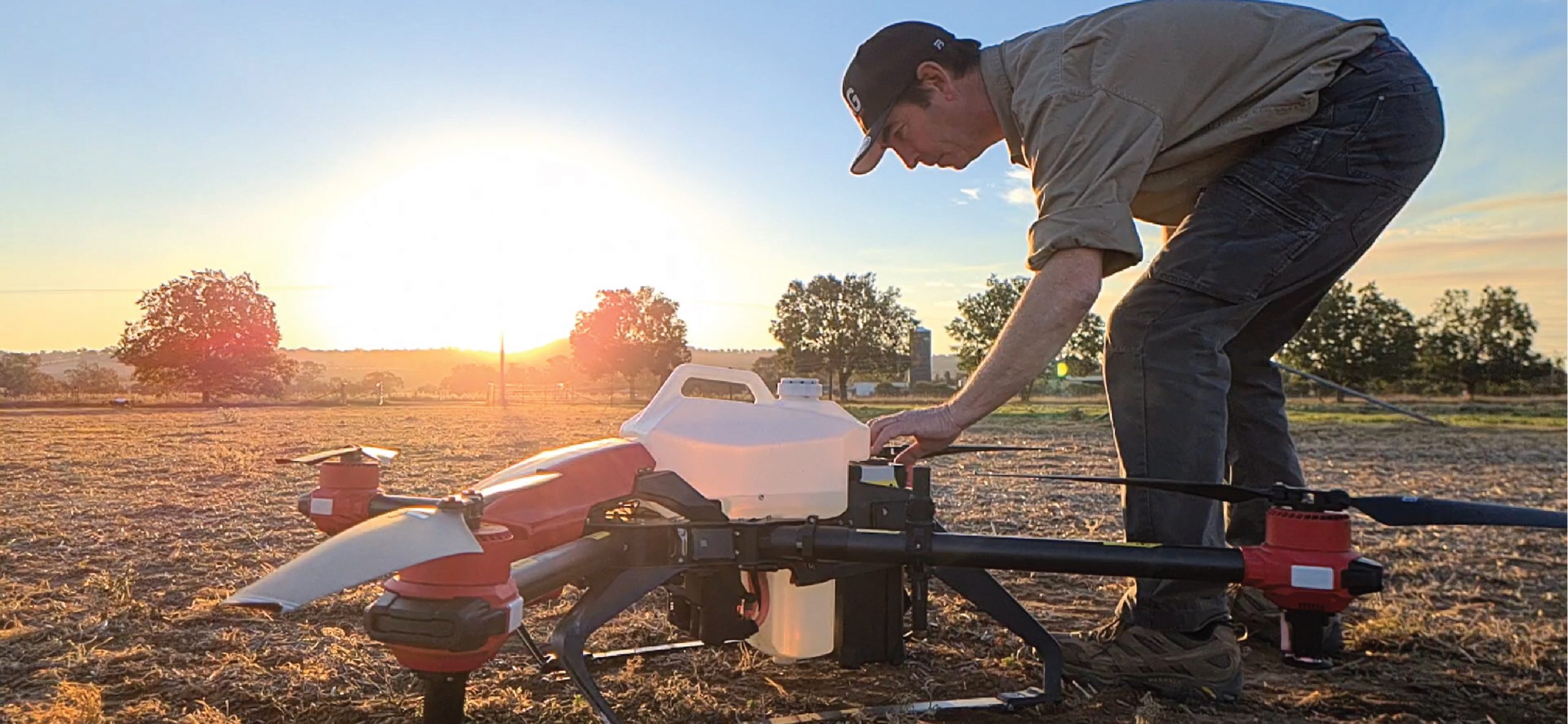When a job involves handling containers of hazardous chemicals, including moving, decanting or mixing them, spillage might occur .
Having showered and removed contaminated clothing, the question is how to clean-up the spill and should the job be handed over to emergency services?
The trouble is every accidental spill is unique to the type of chemical(s) spilled, the location of the spill and the sensitive areas or people in the vicinity. Although there is no ‘one size that fits all’ in terms of emergency response guides, a generic guide can be useful for most applications involving non-flammable Agvet chemicals.
In most rural applications, chemical mixing is done in open air, on a waist high mixing bench next to a machinery washdown bay, so ventilation is not a big issue. By contrast mixing chemicals in the field or in public places represents much greater risk to environment (as well as the public), the reason why sensitive areas such as national parks limit spray operators to carrying in with them only small quantities of chemical concentrate each trip.
Process and Equipment
The first decision to be made is concerning the size and nature of the spill: is it a Major or Minor spill?
Major spills involve immediate risk to human health or the environment or uncontrolled fire and explosion and as such require evacuation and calling emergency services on ‘000’. Obviously attend to anyone affected, move them upwind of the site, decontaminate, administer first aid and seek medical attention.
Where there is no immediate risk to human health or the environment, i.e. a Minor spill of pesticides which are non- flammable, ‘the Chemcert Generic Emergency Spill Response” is a useful guidance tool to be used in tandem with the spilt products SDS section 6, noting the example below. Where no PPE is referenced in section 6 of the SDS, refer to section 8 for appropriate exposure controls.
ChemCert’s 5 steps generic emergency spill response (Minor Spills)
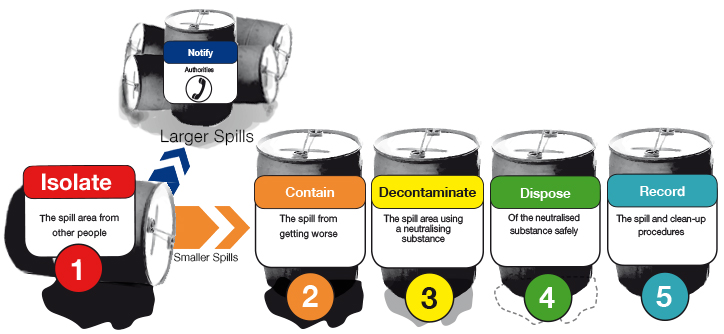
1) ISOLATE
- Keep unnecessary people, children, livestock and pets away
- Wear appropriate protective clothing as per SDS
- Avoid direct contact with the chemical or fumes
- Keep naked flames and spark generating equipment away from the area.
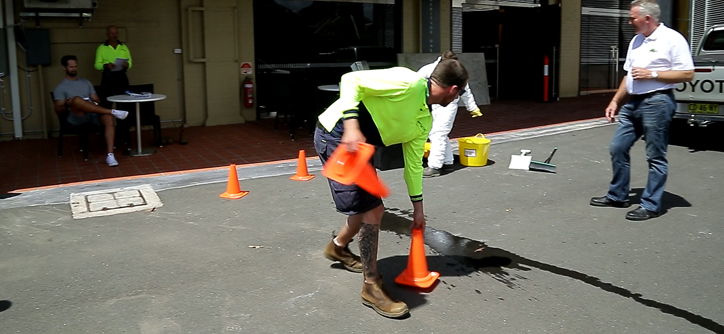
2) CONTAIN
- Take immediate steps to control the flow of chemical from the spillage source
- Form a dam with absorbent material to prevent liquid spreading further.
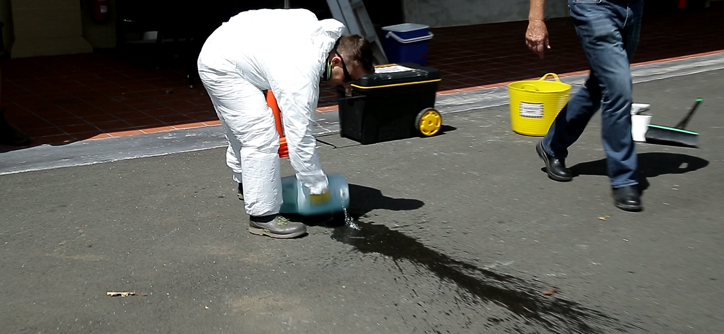
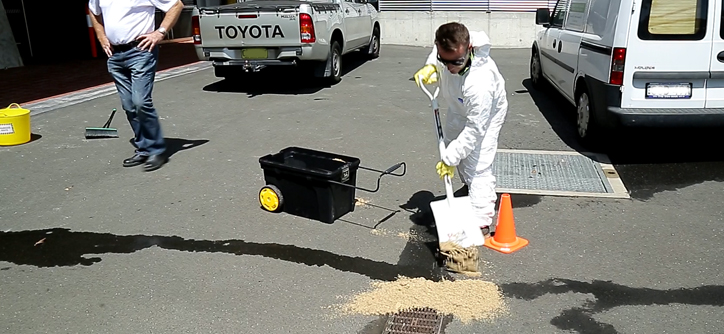
3)DECONTAMINATE
- Consult store records, and product SDS for suitable absorbent material
- Absorb liquid by covering the spill with specified absorbent material
- Powder or granule pesticide residues (but not fumigants) can become airborne. The dust hazard can controlled by slightly wetting the material with a fine water spray (unless incompatible) and decontaminating as per SDS
- If soil is contaminated, remove the top 5 to 10 cms of soil and dispose with the waste chemicals. Cover the ground area with hydrated lime (respiratory hazard so wear a mask) and cover the lime with a layer of clean soil (in some soil types the contamination may run deeper than 10 cms).
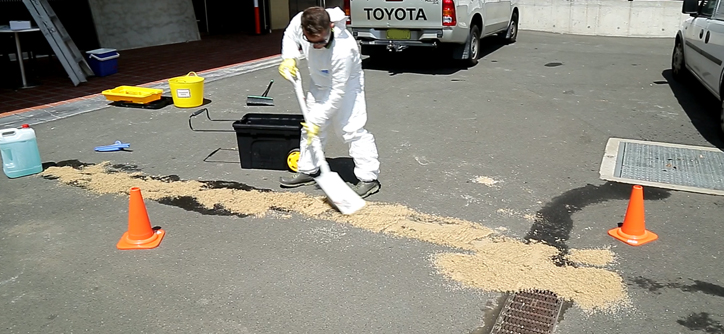
4) DISPOSE
- Sweep the area carefully, and shovel the absorbed chemical into open headed drums for disposal. Mark the drums ‘Waste for Disposal’, include the product name and attach SDS to container
- Dispose of waste product, contaminated cleaning solutions or PPE as per SDS
- On completion of clean-up operations remove and wash PPE, and contaminated clothing immediately. Launder as soon as possible. Shower with liberal quantities of soap and water.
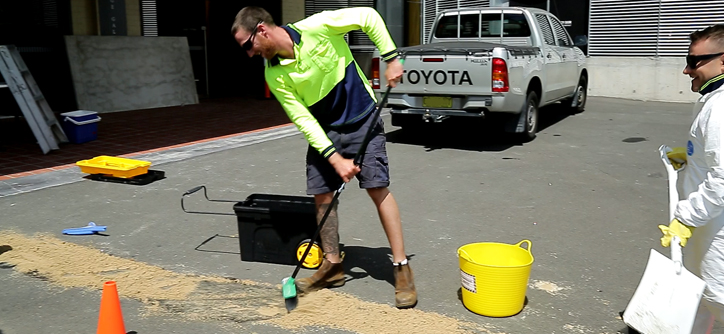
5) RECORD
- Record the spill and clean-up procedures.
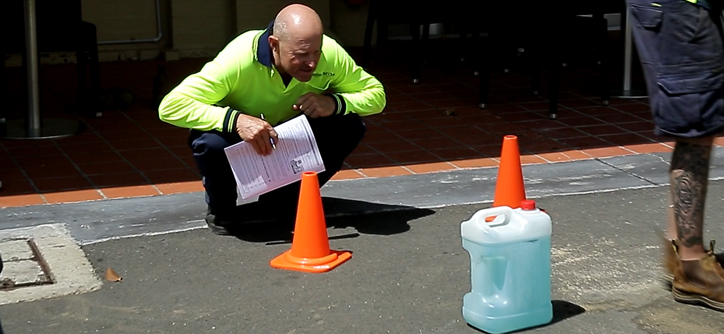
There is an Australian Standard being phased in this year for labelling of Spill Kits , AS 1319-1994, so if you purchase one make sure it is fit for purpose, as wheelie bin spill kits will have a lime green base, with a white lid for fuel and oils, a grey lid for general purposes and a yellow lid for Hazchem.
If you are an app fan, there are a few free apps to help with Emergency Response: two notable ones are Cargo Decoder and ERG 2016 for Android. You just input the 4 digit United Nations (UN) number and the emergency response guide for your spilled product is at your fingertips.
Prevention is better than cure, so have a look at the Chemcert Storage guide to help prevent spills through clever storage design to help limit accidental spills.
You can learn more about chemical spill response at one of our AQF3 Chemical Accreditation courses .
All the pictures in the article have been taken at one of our face to face AQF3 Chemical Accreditation courses in Sydney .

